
On 4 May 1825, Thomas Henry Huxley was born, an English biologist that was the leading naturalist in the nineteenth century, with a scything intellect. He gave scintillating lectures, wrote books that remain interesting reading today and whose name is still recognized from the many quotes he provided in them.
He penned a short Autobiography, only a few pages long, that was first published in a series of biographical sketches by C. Engel in 1890. Clearly, that took quite some prodding by Engel, for Huxley wrote to his wife about it: “A man who is bringing out a series of portraits of celebrities, with a sketch of their career attached, has bothered me out of my life for something to go with my portrait, and to escape the abominable bad taste of some of the notices, I have done that.” (2 Mar 1889).
Thus, it was by choice that he left no more substantial autobiography.
Yet the Autobiography he wrote for Engel makes delightful reading, because it is mostly a breezily written series of short reminiscences of his early life, as a schoolboy and as a ship's surgeon. He spends but little time on the career for which he is most known. As an “in his own words” article, this is one of the most enjoyable your newsletter editor has had the pleasure to bring to your attention.
This version of the Autobiography has footnotes added (by an editor for a 1909 collection of Huxley's essays), so there is additional enlightening information.

On 4 May 1825, Thomas Henry Huxley was born, an English biologist who was the best-known supporter of Charles Darwin and his theory of evolution. Today's book pick is: Thomas Henry Huxley: The Evolution of a Scientist, by Sherrie L. Lyons. In this eminently readable book, the author shows Huxley nevertheless had a critical view on Darwinian science as being too simplistic. Yet that led to a strengthening of evolutionary theory. A self-appointed defender of truth, Huxley developed his own research program, examining philosophy prior to Darwin in an effort to fill the holes in evolutionary theory.
The author also looks at Huxley’s conversion from salutation to gradualism, and his views on progression and the fossil record. This fascinating and important biography goes much further than the terse summaries which are all most non-specialists have read. Lyons presents a multifaceted portrait of Huxley, and why he was a leading Victorian naturalist.
It is available from Amazon, typically about New from $74.70. Used from $8.98. (As of earlier time of writing - subject to change.)
 | We may always depend on it that algebra, which cannot be translated into good English and sound common sense, is bad algebra. |
 | Any one who is practically acquainted with scientific work is aware that those who refuse to go beyond fact, rarely get as far as fact. |
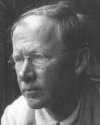 | The usefulness of mathematics in furthering the sciences is commonly acknowledged: but outside the ranks of the experts there is little inquiry into its nature and purpose as a deliberate human activity. Doubtless this is due to the inevitable drawback that mathematical study is saturated with technicalities from beginning to end. |
| Before you look at today's web page, see if you can answer some of these questions about the events that happened on this day. Some of the names are very familiar. Others will likely stump you. Tickle your curiosity with these questions, then check your answers on today's web page. | |
| Births | |
 | On 4 May 1899, Fritz von Opel was born, who became a German automotive industrialist. Yet he had an interest in another, more novel, form of transport propulsion. What was the novel transport propulsion that Opel pursued? |
 | On 4 May 1825, Thomas Henry Huxley was born, an English biologist who was the best-known supporter of Charles Darwin and his theory of evolution. In 1860, he debated a Bishop on the subject, at the British Association for the Advancement of Science. Challenged by the Bishop as to whether he traced his ancestry to the apes, Huxley famously gave the withering reply that given the choice of a miserable ape and a man who could make such a remark at a serious scientific gathering, he would select the ape. What is the name of the Bishop who challenged Huxley about his ancestry? |
| Deaths | |
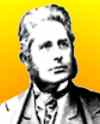 | An Englishman (1827-1900), who was often called the “father of British archaeology,” stressed the need for total excavation of sites, thorough stratigraphic observation and recording,. What is the name of this archaeologist? |
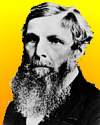 | William Froude (1810-79) was an English engineer began by working for the British railway system as a civil engineer, but a few years later began a career as a naval engineer. He was a laboratory scientist whose work was of great value to the British navy. What problem did he address, and what technique did he use? |
| Events | |
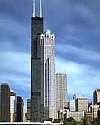 | In 1973, this U.S. building topped out at 1,454-ft tall. In fact it is 1,707-ft tall if its twin antennas are included, making it taller than the Empire State Building in New York. What name was given this skyscraper at the time it was built? And in which city? |
 | In 1886, three patents were issued to Chichester Bell and Charles S. Tainter concerning their invention. Thomas Edison’s invention preceded theirs, but the newly patented invention used an approach that made a more practical design that replaced Edison’s, and was used for many years. What was the invention patented by Bell and Tainter? |
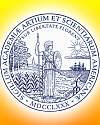 | Since 1780, when this U.S. society was chartered, to the present day, it has had many famous people as its members. Since its early days when its membership included the likes of Benjamin Franklin, George Washington, numerous notable scientists have been enrolled. To say that the society is known by its initials AAAS will make it an easier question to answer. Can you give the full name of this society? |
Fast answers for the previous newsletter for May 3: he formulated the electroweak theory, which explains the unity of electromagnetism with the weak nuclear force • that electrons exhibit the wave-like property of diffraction • war • Rocky Mountain spotted fever • heart transplant.
 If you enjoy this newsletter, the website, or wish to offer encouragement or ideas, please send feedback by using your mail reader Reply button.
If you enjoy this newsletter, the website, or wish to offer encouragement or ideas, please send feedback by using your mail reader Reply button. Your click on a Facebook, StumbleUpon, or other social button on the site webpages is also a welcome sign of appreciation. Thank you for using them.
© This newsletter is copyright 2020 by todayinsci.com. Please respect the Webmaster's wishes and do not put copies online of the Newsletter — or any Today in Science History webpage. (If you already have done so, please remove them. Thank you.) Offline use in education is encouraged such as a printout on a bulletin board, or projected for classroom viewing. Online, descriptive links to our pages are welcomed, as these will provide a reader with the most recent revisions, additions and/or corrections of a webpage. For any other copyright questions, please contact the Webmaster by using your mail reader Reply button.
--
If you do not want to receive any more newsletters, Unsubscribe
To update your preferences and to unsubscribe visit this link
Executive Real Estate Business Class
-
"It was like a man with wings. It wasn't like anything you'd see on TV or in a monster movie." ...
-
55 Creepy Photos From The Darkest Recesses Of Human History From the Fre...
-
This has to be the world worst election malpractice in the history of democracy where one vote equal 19. Chief Obafemi Awolowo (a lawy...
About the publisher
Search This Blog
Blog Archive
-
▼
2020
(1542)
-
▼
May
(194)
- FAMILY: Building kindness in a tough time
- What is history's biggest mystery?
- On This Day for May 31 - Adolf Eichmann hanged, Cl...
- Globalist Race War? because COVID Coup exposed? ...
- Newsletter for Sunday 31 May.
- May 31: Battle of Jutland, Earthquakes and the Clo...
- BREAKING NEWS: SpaceX launches new era of spacefli...
- The Compass: Spain
- On This Day for May 30 - Joan of Arc burned at the...
- Newsletter for Saturday 30 May.
- CORONAVIRUS SPECIAL EDITION: The best way to clean...
- May 30: Voltaire the Rebel
- This Week's Roundup Top Ten from History News Network
- On This Day for May 29 - Mount Everest summit reac...
- Newsletter for Friday 29 May.
- You & your loved ones can be Involuntarily Quarant...
- YOUR WEEKLY ESCAPE: The famous Viking warrior who ...
- May 29: Return of Charles II, Mt. Everest Knocked ...
- Alone Returns With a $1,000,000 Prize
- On This Day for May 28 - Amnesty International fou...
- The secular utilitarian U.N. New World Order has a...
- Newsletter for Thursday 28 May.
- May 28: Spanish Armada Sets Sail, The Indian Remov...
- SCIENCE: Restoring an American frontier
- Breaking News from History News Network
- On This Day for May 27 - Founding of St. Petersbur...
- Christian History Magazine: Covid-19 Response
- Newsletter for Wednesday 27 May.
- Learn whose pulling the strings what the media ha...
- May 27: Habeaus Corpus, Priam's Treasure and Dunkirk
- TRAVEL: Find the secrets to your backyard
- Journey with Ancient Explorers when you subscribe ...
- On This Day for May 26 - Martin Luther declared a ...
- Newsletter for Tuesday 26 May.
- May 26: Start of the Dow Jones Index, Middle Easte...
- HISTORY: The tumultuous past of the U.S. Postal Se...
- A Memorial Day Offer from Britannica!
- Grant Premieres Tonight!
- New This Week On History News Network
- On This Day for May 25 - U.S. Constitutional Conve...
- Economic Re-Opening is a Fakeout + CDC numbers rev...
- Newsletter for Monday 25 May.
- May 25: On This Day in History
- FAMILY: Moving past a big disappointment
- The real history behind WW2 film 'Greyhound' | Ann...
- On This Day for May 24 - Opening of the Brooklyn B...
- Newsletter for Sunday 24 May.
- Vaccine: 20 percent Serious Injury after skipping ...
- May 24: Methodism, Morse Code and the Bridge that ...
- The Compass: Argentina
- Your New Favorite Podcast
- On This Day for May 23 - Tibet annexed by China, C...
- Watch all the talks from BBC History Magazine's Me...
- Newsletter for Saturday 23 May.
- Dolores Cahill PhD expert in molecular genetics an...
- CORONAVIRUS SPECIAL EDITION: There's a reason so m...
- May 23: The Crazy Trigger for the Thirty Years War
- PHOTOGRAPHY: Capturing 59 years of human spaceflight
- How Booze, Drugs, And A Woman Named June Destroyed...
- A Memorial Day Sale for Everyone!
- The Roundup Top Ten from History News Network
- On This Day for May 22 - Roman Emperor Constantine...
- Newsletter for Friday 22 May.
- YOUR WEEKLY ESCAPE: What do the world's happiest p...
- May 22: The World's 1st Atlas is Published and WWI...
- ANIMALS: Saving the pangolin
- On This Day for May 21 - First nonstop solo transa...
- May 21: The 1st Transatlantic Flights and some Mem...
- Ron Panzer interview will air on Friday on Trunew...
- Grant: Watch the Extended Opening Scene
- SCIENCE: Food supply challenges prompt creativity
- Breaking News from History News Network
- On This Day for May 20 - U.S. Homestead Act signed...
- Newsletter for Wednesday 20 May.
- Ron Panzer interview: Trunews.com Today at 3 pm E...
- May 20: Vasco da Gama, Shakespeare and My Fair Lady
- TRAVEL: The promise of happiness, even now
- Inspire Their Curiosity w/ Nat Geo Kids Magazine
- On This Day for May 19 - Ringling Bros. Circus for...
- When we learn what the vaccine will do to everyone...
- Newsletter for Tuesday 19 May.
- May 19: On This Day in History
- See The Most Accurate Map In The World
- HISTORY: At 110 years old, he made our cover
- New This Week on History News Network
- On This Day for May 18 - Eruption of Mount St. Hel...
- Newsletter for Monday 18 May.
- May 18: On This Day in History
- FAMILY: Helping your kids after their troubling dr...
- What did Queen Victoria really look like? | Mediev...
- On This Day for May 17 - School segregation outlaw...
- Newsletter for Sunday 17 May.
- Cardiologist states Hydroxychloroquine side-effect...
- May 17: NYSE Forms and the Watergate Hearings Begin
- The Compass: California
- On This Day for May 16 - Warsaw Ghetto Uprising su...
- Newsletter for Saturday 16 May.
- May 16: Dambusters and Stem Cells
- CORONAVIRUS SPECIAL EDITION: This map shows where ...
- The dream to photograph 10,000 vulnerable animal s...
-
▼
May
(194)
-
Blogroll
-
About
HistoryFact











0 comments:
Post a Comment